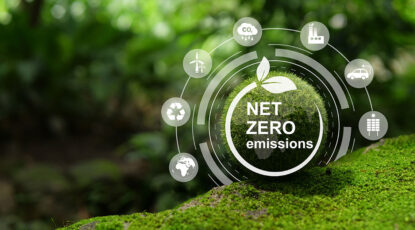The Business Case for Resiliency
In January 2021, a semiconductor manufacturer in Bangalore, India faced 24 power quality events over a 7-day period. With Bloom’s resilient power solution, they were able to carry their critical load and maintain business continuity. Power resiliency is the ability to protect energy supply during outages, and it’s something companies must consider in their business planning. Nobody can predict when and for how long power will be interrupted. More frequently, due to recent extreme weather challenges, utilities are forced to intentionally suspend transmission any time that severe conditions demand it.
Public safety power shutoffs and other planned shutoffs happen when poor conditions increase the risk of fire ignitions due to downed trees or other grid failures that interrupt transmission. As we explored previously, these weather events have a multi-billion dollar economic impact every year.
Businesses lose power frequently, and more often than before, as a result of extreme weather. There has been a 67 percent increase in major power outages from weather-related events from 2000 to 2019. These major power outages are happening for longer durations, increasing 61 percent in average total annual electric power service interruptions from 2013 to 2018. This creates uncertainty and unpredictability for businesses, and illustrates the mandate businesses have for resiliency.
These outages are further underscored by their financial impact. Over 20 percent of companies see an average of at least $100,000 in financial impact from a typical outage. Increasingly, customers plan for multiple outages and worry about resiliency.
Forty-one percent of businesses plan for outages that last three or more days and 49 percent have made resiliency and business continuity a larger business priority in the last three years. It’s a priority because the problem is very real and affects local communities and people around the world.
From 2010 to 2019, extreme weather events caused almost 70 percent more power outages in the United States than the previous decade.
Bloom Providing Resiliency
Over the years, Bloom Energy has embodied resilience, delivering for its customers time and time again – domestically, even internationally, powering our partners through hours or even days without power from the grid. We provide resiliency to customers ranging from grocery stores to data centers, manufacturing facilities to corporate headquarters. Here are just a few recent, notable events in which Bloom Energy demonstrated its support for businesses and the importance of resilient power:
- In August 2020, Tropical Storm Isaias hit the northeast. Bloom Energy prevented 25 outages across 14 microgrids, including a 911 call center in Huntington, NY, ensuring that those in need could reach emergency services.
- Also in August, 1.2 million Californians were impacted by rolling blackouts amidst record-breaking heat. Bloom Energy’s 265 MW of power in the state reduced stress on the grid, preventing an equivalent of 200,000 homes from losing power.
- Two months later in October in New York, Bloom Energy carried critical load for 30 hours when a retail store lost power in the middle of the afternoon, allowing the store to continue operations and stay available to the community for needed supplies.
These case studies convey our demonstrated reliability when businesses face extreme weather and outages threatening their operations, underscoring Bloom Energy’s proven track record. When it comes to providing our customers with resilient solutions, we’re committed. In fact, we’ve shielded our customers from thousands of grid outages.
Bloom Energy is a trusted partner providing microgrid solutions while ensuring that businesses have uninterrupted power. Our unique on-site power generation systems produce power where it’s consumed so our customers avoid the threat of power disruptions and benefit from clean and affordable electricity.
Stay tuned for our next blog in the series where we’ll dive into greater depth about the difference between rural versus urban spaces and how resiliency impacts the two.



